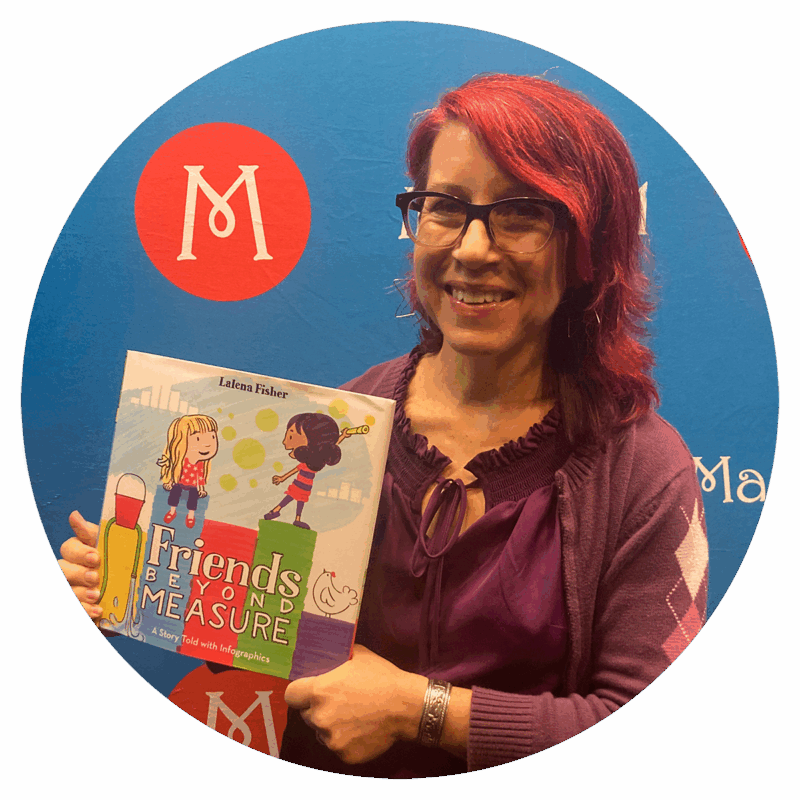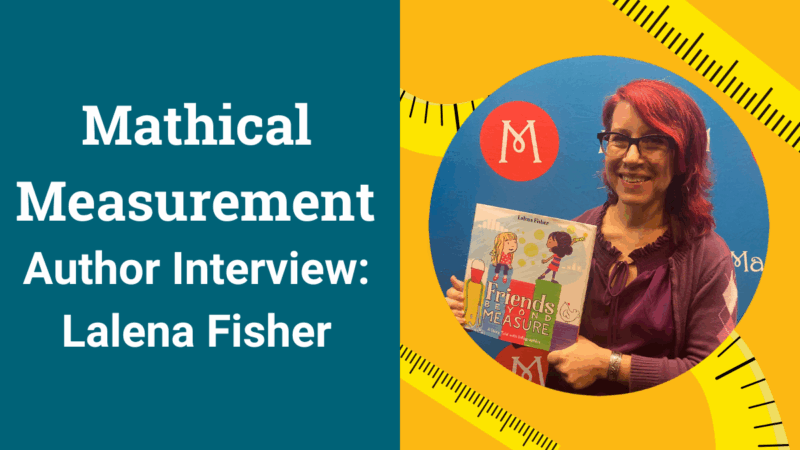Measurement is a big topic for children. It’s about making sense of the world around us. This month, Mathical Books coordinator Kirsten Bohl interviews four Mathical authors about measurement, asking them five questions to explore their writing process.
Read the interviews:
Lalena Fisher – Nicola Kent – Rilla Alexander – Mike Downs

Five Questions for Lalena Fisher, author and illustrator of Friends Beyond Measure
1. Measurement + emotion is not an equation many adults consciously resonate with — but children often do. Can you say more about how emotions show up in your book?
Lalena Fisher: Emotions are complicated, and it’s helpful to dig into them. In Friends Beyond Measure, Ana does this by drawing charts and maps to explore where her emotions come from, what comprises them, what she can do with them, and how they compare with others’ emotions.
The most straightforward chart on Ana’s feelings is the giant bar graph she makes after Harwin tells her she is moving away. Ana is flopped on top of a bar for SHOCK, but around her are bars for SADNESS, FEAR, and ENVY.
Ana also considers packing herself into Harwin’s suitcase, so she draws a decision tree to anticipate all the possible outcomes and her feelings about them. She tracks her feelings of excitement, fear, disappointment, and finally relief in a timeline of Halloween trick-or-treating with her friend.
2. How did you decide to write — and draw — about measurement?
Friends Beyond Measure grew naturally out of my work in data visualization and children’s animation, and my very genuine feelings about my own friend’s upcoming move across the world. The challenge to merge these three things into an emotional story was irresistible!
3. Please share one especially surprising fact you learned while making the book.
I never had thought of calendars as infographics before. But they organize time in a useful visual way, so of course they are charts!
4. Mathical books often have a theme of self-empowerment among children. We want children to learn to love & enjoy math, being mathy and doing math & experiencing their world as knowable, changeable, and worthwhile to play in. Can you say more about how the child / children in your story are “in charge” of their own story?
Ana tells the story of her friendship in her own way. She is a visual person, as a lot of kids are. She expresses herself in the way that comes naturally to her. She and Harwin also direct their own imaginative, sometimes nonsensical and funny, playtime.
5. Anything else you’d like to share?
I think it’s important that kids know math is more than arithmetic and problem-solving. I didn’t know this when I was in elementary school; I thought arithmetic was tedious and boring, so I assumed math was tedious and boring. But math is so much more than arithmetic!
For instance, I loved drawing pictures, and I loved organizing things. I didn’t know yet that math can describe shapes, and that you could take math and turn it into pictures. I didn’t know that music—which I loved—is just math, used creatively!
Math is all around us, and we can understand and communicate about the world with math. You can play with math, and math can be creative and artistic. I wish I had known!
Explore the Book
Friends Beyond Measure: A Story Told with Infographics by Lalena Fisher
2024 Mathical Award Winner for Grades K-2 (Ages 5-7)
Meet the Author: https://www.lalenalab.com

